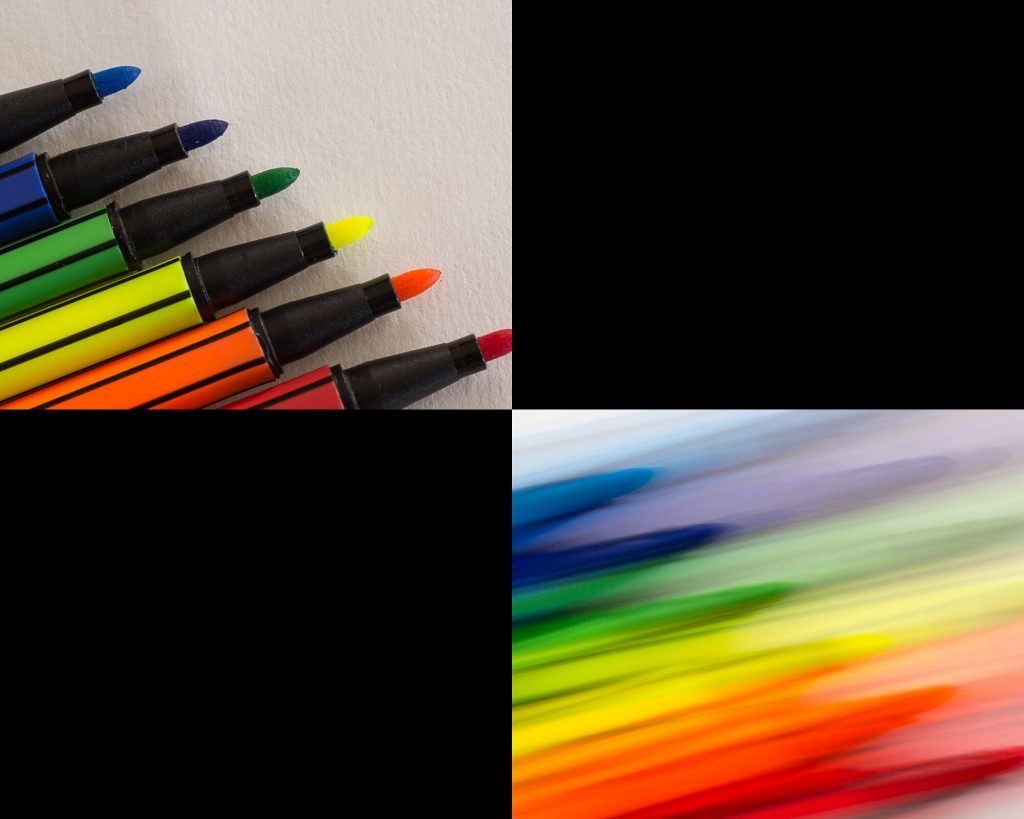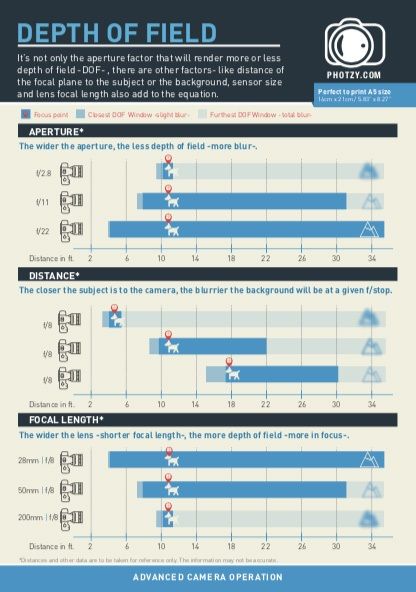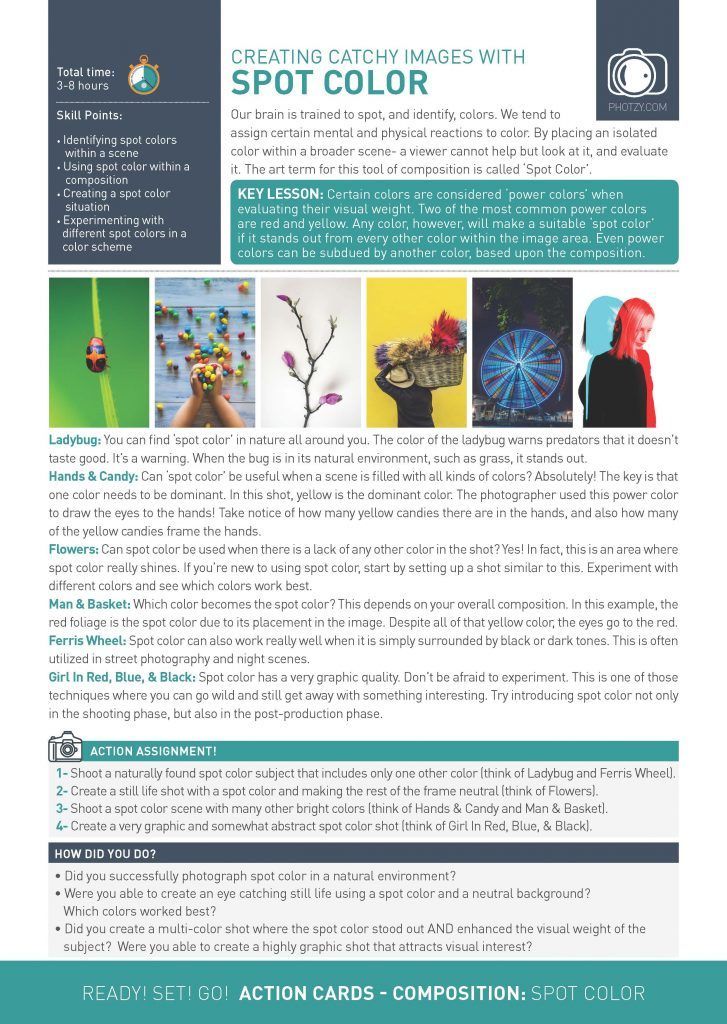Useful Resources For Photography Educators
Photography teachers! Here’s a collection of useful resources that will help with student engagement in 2024.

New / Noteworthy
For many teachers, the school year is coming to a close, but you’re already looking ahead to next fall. What changes will you make to your curriculum? What new ideas will you bring to your teaching?
And all this in a normal school year! With many schools still closed due to the coronavirus pandemic, teachers are facing the additional challenge of adapting their instruction to an online-friendly format while keeping students engaged.
Whether you’re revamping your methods for giving class online or preparing for a return to the classroom, finding the right resources to deliver curriculum to your students is key. Here at Photzy we’ve scoured our catalog of more than 250 photography guides to find key materials to help your students improve their photography. Below are a few ideas to get you started:
Active Learning
Think about how you learn new skills in photography. Maybe you watch Youtube videos where a pro photographer explains a concept, or you read one of Photzy’s many free ebooks. Great! Now, how much do you recall afterward? For most of us, the answer is ‘not much.’
Now let’s add one more step to the learning process. After watching or reading, you grab your camera and start shooting, using the information you learned. This time, we actually put into practice the concept we’re studying. Now how much do you recall? A lot more, I bet!
Regardless of the method of input, if we don’t practice the skill, we don’t retain the new information. The same is true for our students, of course.
So what’s a photography teacher to do? How can we design interactive lessons for our students, lessons that ‘stick’ long after class is over?
This is where active learning comes in. Active learning is a dynamic, student-centered approach to teaching in which students participate and interact with the learning process, as opposed to passively taking in the information. Students learn through exploration and guided practice, ensuring they’ll retain the material.
How can we deliver lessons in which students actively participate — especially if we’re delivering class online? By offering shooting assignments that correspond to each new concept or skill.
Let’s say students are studying the compositional technique of Spot Color. You show sample photographs, discuss what works and doesn’t work, and then it’s time for students to take out their cameras and practice. But without specific guidance in their shooting assignment, we all know how this ends. A few students are spot-on; they’ve understood the concept perfectly. But many others return photos that only halfway meet the criteria. Students need specific, step-by-step instructions in order to achieve the desired result. There’s no substitute for guided practice.
Luckily, Photzy’s Action Cards series offers just that.
Check out this sample card, a lesson on Spot Color:
Did you notice the “Action Assignment” section? Notice how clear and specific the instructions are? This is key to guiding students through their first attempts in using a new skill or concept.
And the cards even take it a step further, offering prompts for self-reflection and feedback. What better way to ensure that students really grasp the concept?
Out of the Box Assignments
So your lesson material is captivating, your presentation thrilling, and still, your students just aren’t engaged? We all need a little ‘spark’ once in a while. Here are a few ideas to spice things up and offer your students a lesson on an unexpected topic:
Abstracts with Oil and Water
With many students still stuck indoors due to the coronavirus pandemic, you’re probably designing lessons that use minimal materials and don’t require venturing far from home. Luckily, with just a few basic kitchen items, students can create brightly-colored, abstract works of art.

And, as author Leanne Cleaveley points out, this style of photography is about much more than just creating abstract photographs:
It’s about “using shapes, forms, colors, and textures, so you can turn the photographs upside down and sideways to look for patterns. You can experiment with negative space and balance. You can highlight particular parts in the shot using the rule of thirds.”
Intentional Camera Movement
We’ve all experienced students who are resistant to try out a new skill. Maybe they’re feeling intimidated and unsure, and they need to experience success to gain confidence. With this next assignment, you can reassure even the most timid of learners that they have already used this technique – we all have, by accident.
Here is how Leanne describes the technique in her eBook…
"Many of us have snapped a photo before adjusting our shutter speed, or moved to scratch an itch, just as we hit the shutter button, only to find that what we snapped turned out kind of interesting.
Let’s take that one step further, and say you purposefully sweep the camera, ground to sky, while shooting a forest scene. Now, you have moved into the realm of ‘intentional camera movement’."

If we can turn an ‘oops’ moment into something pretty cool, imagine what you can do by intentionally adding movement to the shot. This is one of those ‘can’t-go-wrong’ assignments that will surprise you and your students with the results!
Photographing the Mundane
Here, we’ll throw out one more idea for a lesson plan that would be great for both distance learning and traditional classroom teaching: David Veldman’s guide 7 Ways to Shoot the Mundane. The seven concepts mentioned are some of the building blocks of composition, such as shape, color, and texture, but now interestingly applied to everyday objects.
Just think of all the scenarios in which this ebook could be useful:
- As an introductory text to beginners who are just getting started with photography
- As a summary, end-of-course text to review techniques taught during the semester
- As a guide for those advanced students who need an added challenge and can complete tasks independently
My favorite use of the ebook is by complementing it with a “One Object, Seven Ways” assignment, in which students have a set amount of time to photograph the same item seven times using the seven techniques — and then the rest of the class tries to guess what technique was used in each photo. Imagine the competition for finding the “most boring” object and making it into the “most interesting” photograph!
Say It With Infographics
Maybe you’re on the hunt for the perfect wall poster for your classroom – something eye-catching but also informative. Or maybe decorating a classroom isn’t on your mind at all, as this year will be 100% digital. For either case, Snap Cards offer a straightforward, graphic-based explanation of photography concepts for beginner to advanced photographers.
Change out the poster on your bulletin board as you study each new concept, or arm students with take-along guides they can access long after class. Either way, this resource makes concepts like Depth-of-Field painless to understand.

Even seasoned photographers need a reminder of complex camera settings. Offering your students an uncomplicated visual reference will help them retain the information and put it to use!
Where Can I Find More Resources?
These are just a handful of ideas that we hope you can utilize in your teaching. If you’d like to browse all of Photzy’s free and premium guides and find some that work for your students, get started here.
If you have a great idea for a resource Photzy could provide for teachers, let us know!
And now the fine print 🙂
Remember that you can share the free guides and content that we have with your friends. To access our free content, click here: https://photzy.com/free-photography-ebooks/
For premium guides, Snap Cards, and Action Cards, we offer an educational discount to facilitate purchases of multiple licenses for class sets. If that’s of interest to you, write us here.

About Connie Davis
Connie has more than fifteen years' experience teaching children in a variety of disciplines. She is passionate about blending her knowledge of pedagogy in the arts, and is regularly invited as a workshop instructor to lead photography courses for young people, as well as programs in international music and textiles.



